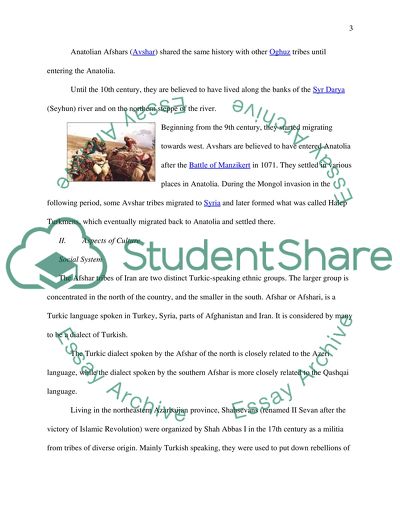Cite this document
(“Afshar tribe of Iran Essay Example | Topics and Well Written Essays - 2500 words”, n.d.)
Retrieved from https://studentshare.org/anthropology/1585545-afshar-tribe-of-iran
Retrieved from https://studentshare.org/anthropology/1585545-afshar-tribe-of-iran
(Afshar Tribe of Iran Essay Example | Topics and Well Written Essays - 2500 Words)
https://studentshare.org/anthropology/1585545-afshar-tribe-of-iran.
https://studentshare.org/anthropology/1585545-afshar-tribe-of-iran.
“Afshar Tribe of Iran Essay Example | Topics and Well Written Essays - 2500 Words”, n.d. https://studentshare.org/anthropology/1585545-afshar-tribe-of-iran.


